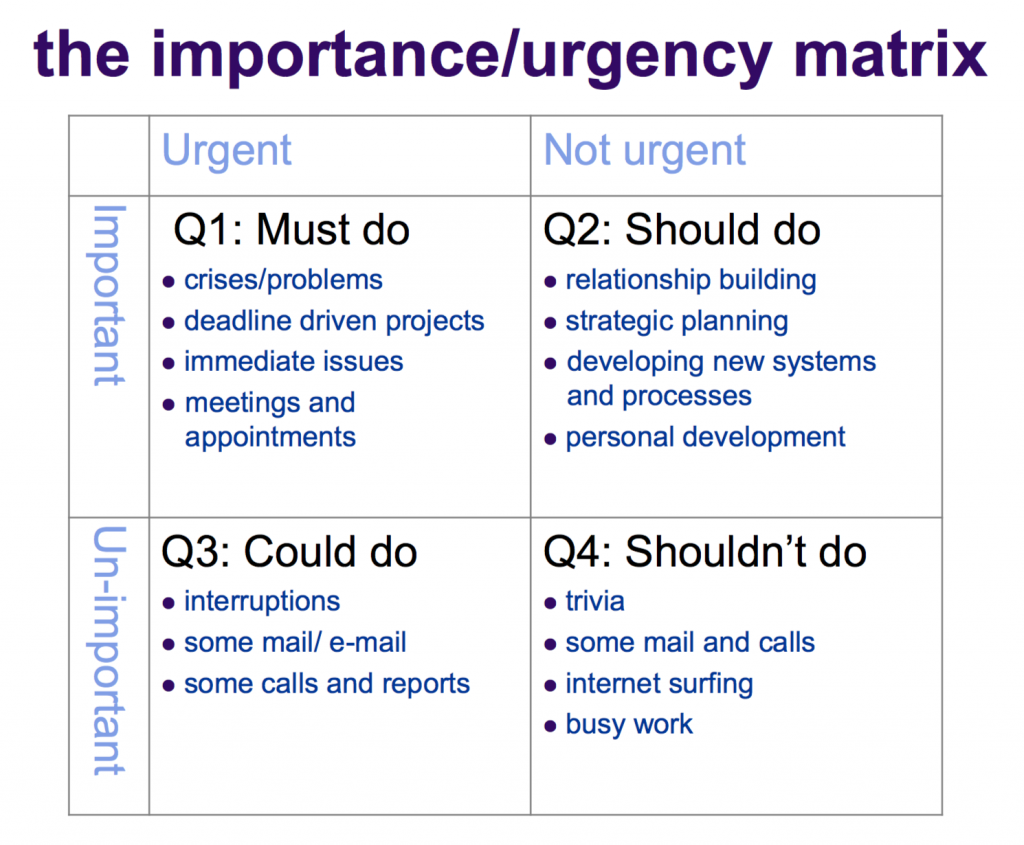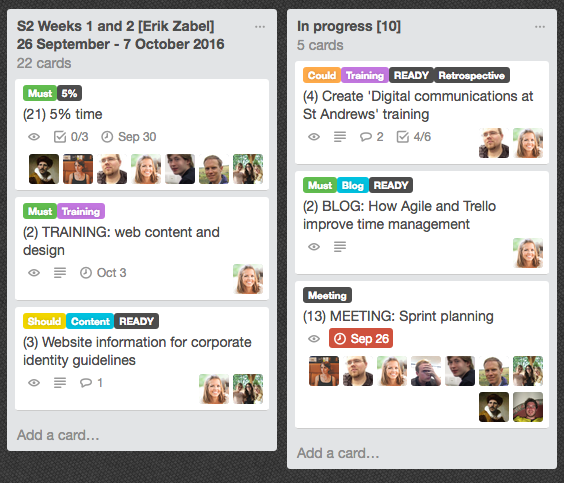How using Trello and agile can help improve time management
I recently attended a time management training course put on by CAPOD. The session was very insightful, providing useful and practical techniques to become more efficient at work.
However, during the session I realised that many of the time management techniques are already integrated into our team’s working system through using a combination of agile methodology and Trello, an online organisational tool.
Here are three ways that using agile in tandem with Trello can help improve time management:
Prioritising
One of the first techniques we covered in the training session was the importance of prioritisation. Without prioritisation, we are likely to take on too many trivial tasks, making it impossible to plan enough room in our schedules to tackle the really important tasks.
In order to prioritise, CAPOD suggests using the importance/urgency matrix (conceived by Dwight D Eisenhower and developed later by Stephen Covey), whereby every task should be categorised as either important or unimportant and either urgent or not urgent. Based on these categorisations, tasks will fall under one of the following:

The importance/urgency matrix is almost identical to DSDM‘s MoSCoW (Must, Should, Could, Won’t) method of prioritisation. MoSCoW is typically applied to a project’s features, but can also be applied to the tasks required to create those features.
Find out more about DSDM and MoSCoW prioritisation.

In Trello, we are able to use ‘labels’ to see the prioritisation of our team’s tasks at a glance. We label every single task as either a must, should, could or won’t; we then work on all of the musts first, moving on to the shoulds and coulds when the musts have been completed.
‘To do’ lists
Another area we discussed during training was how to optimise our use of task lists, which included:
- Writing down all tasks and sub-tasks.
- Prioritising each task.
- Identifying daily or weekly objectives.
- Crossing off completed tasks.
- Reviewing, updates and transcribing periodically.
- Synchronising with your diary or calendar.
- Making a habit of updating your task list.
Using Trello makes using most of the techniques extremely easy: all tasks are added as cards, and sub-tasks can be added as a checklist within each card; cards can be prioritised with labels; completed cards can be moved to a done or completed list; and cards can easily be integrated with online calendars.
As part of our agile discipline, our team meets every two weeks to plan our sprint. During planning, we evaluate our objectives and prioritise tasks. Another agile practice is to conduct daily stand-up meetings, during which we review Trello and make sure cards are in the right lists and still reflect our sprint objectives. Essentially, the agile methodology makes sure we update our to-do list (in this case, Trello) regularly and habitually.

Overcome procrastination
The training course had many great ideas for overcoming procrastination, from removing distractions to going for a quick walk to regain some energy. One of the tips was to break big projects into bite-sized chunks in order to make overwhelming projects seem more manageable.
We estimate how long each task will take to complete. If a task looks like it will take more than a day to complete, we are encouraged to break up the task. In Trello, this means turning one massive card into two or more smaller cards. The satisfaction of being able to quickly complete these mini tasks, leading to the completion of the larger task as a whole, makes it much easier to overcome procrastination.
Learn more!
The training course offered many other advice, techniques and methods for efficiently managing your time that aren’t covered by agile (or made easier with Trello), such as reducing stress and learning to be assertive about saying no. If you are a member of staff at the University, consider attending the next Time Management CAPOD training session.